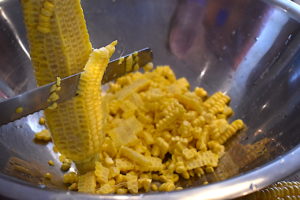From a May 21, 2020 Press Release
Wolf Administration Awards $9.6 million in Grants to Help the Charitable Food System
The Wolf Administration will be awarding more than $9 million to non-profit entities for projects to fight hunger and prevent food waste. The awards come from the expanded Food Recovery Infrastructure grant program announced in April.
Grants will allow food banks, shelters and soup kitchens to cover the costs of equipment purchases necessary to prepare, transport and store food acquired from retailers, wholesalers, farms, processors and cooperatives. Examples of eligible equipment that will be funded include refrigerated or non-refrigerated box trucks, industrial-sized refrigerators, pallet jacks and/or dollies. Installation and shipping costs were also eligible for support.
Increased demand on the charitable food system related to COVID-19 has demonstrated an immediate need for resources to support additional cold storage space, and more flexibility and changes to this grant program. The changes made in April encouraged partnerships between nonprofit organizations such as food banks and farms, processors and cooperatives that continue to experience challenges within the food supply chain as a result of the COVID-19 emergency.
“Many people across the state are feeling the strain of losing jobs or other income related to the COVID-19 crisis, and this will help provide a safety net to ensure that our fellow Pennsylvanians are not going hungry,” said Governor Tom Wolf. “This program also helps ensure that our farmers are not in a position where they have to waste the food and dairy products grown on their farms because of market upheavals.”
“Our goal when expanding the Food Recovery Infrastructure Grant was to quickly get money to the people that could do the most to help, and the charitable organizations of Pennsylvania responded,” said Department of Environmental Protection Secretary Patrick McDonnell. “These grants will help guarantee food security to our residents that need it.”
“These grantees have demonstrated their commitment to feeding Pennsylvanians and simultaneously supporting agriculture,” said Agriculture Secretary Russell Redding. “This grant program is our trifecta, a win-win-win for our commonwealth: allowing food banks to keep fresh produce and dairy stocked and provide it to those in need, eliminating food waste, and preventing losses for our hardworking farmers who have had to deal with so much uncertainty.”
The recipients of the 145 awards include food banks, soup kitchens and churches from across the commonwealth.
The full list of recipients is here.
Based on the most recent survey in early May, Feeding Pennsylvania member food banks are reporting an average increase in demand of 55 percent over what they were seeing one year ago today. Unused or unsold food ends up in landfills, where it can biodegrade and release greenhouse gases like methane. The EPA estimates that in 2015 (the last year when information was available), more than 30 million tons of food waste went into landfills nationwide.
Funding for the grant was made available for Pennsylvania nonprofit organizations for grant assistance for the proper management and operation of food waste reduction pursuant to the Pennsylvania Municipal Waste Planning, Recycling and Waste Reduction Act of 1988, Act 101.




















